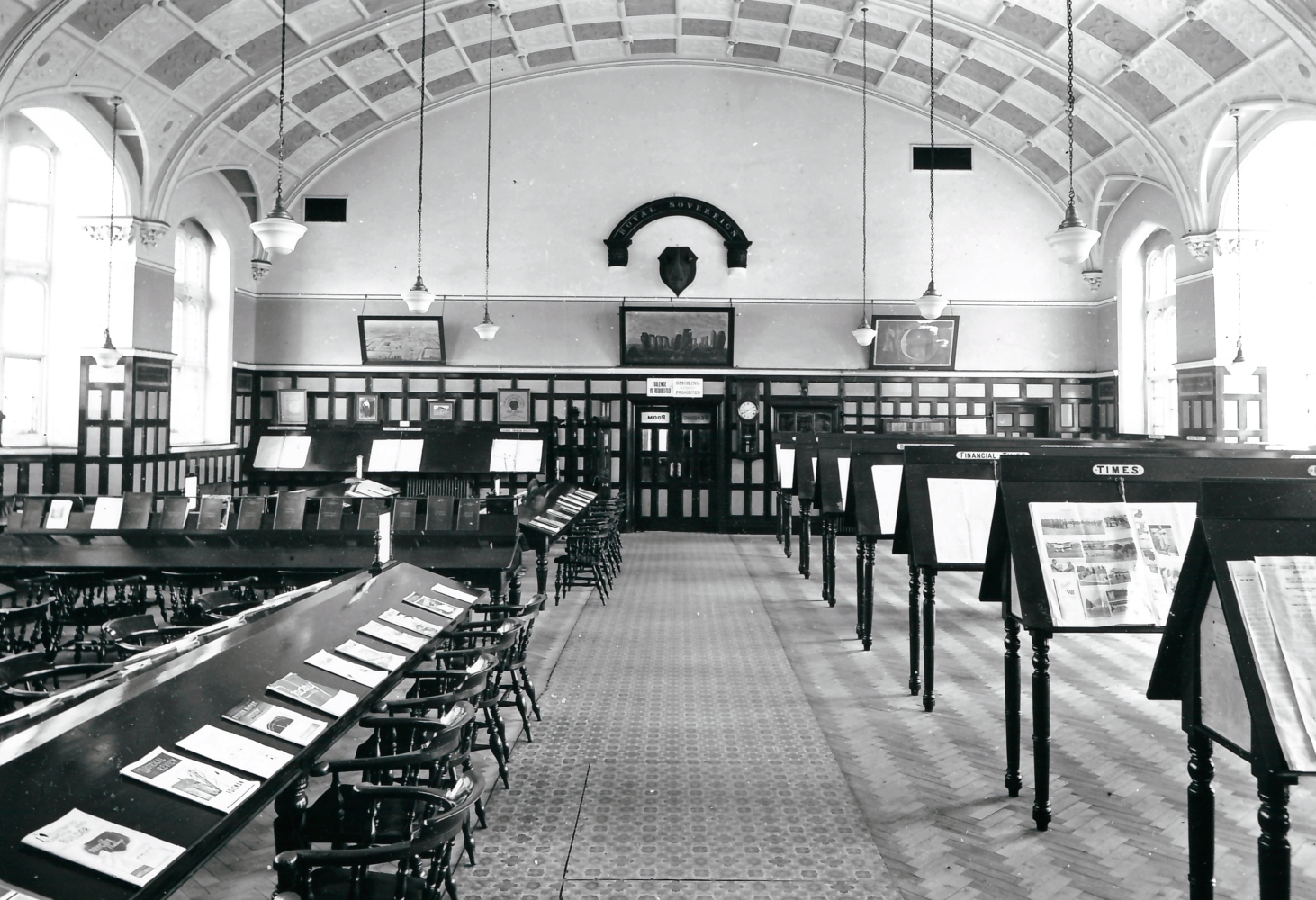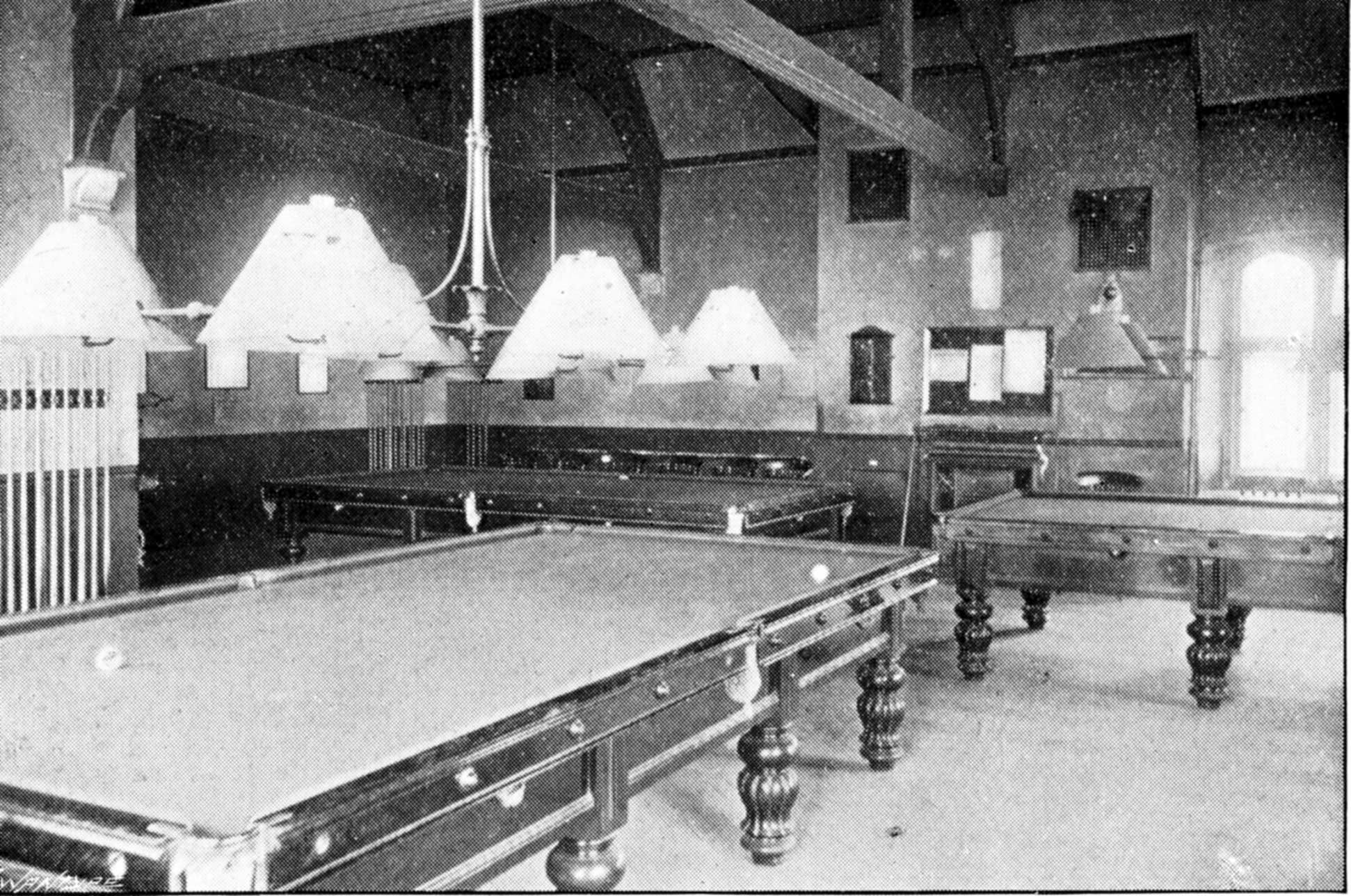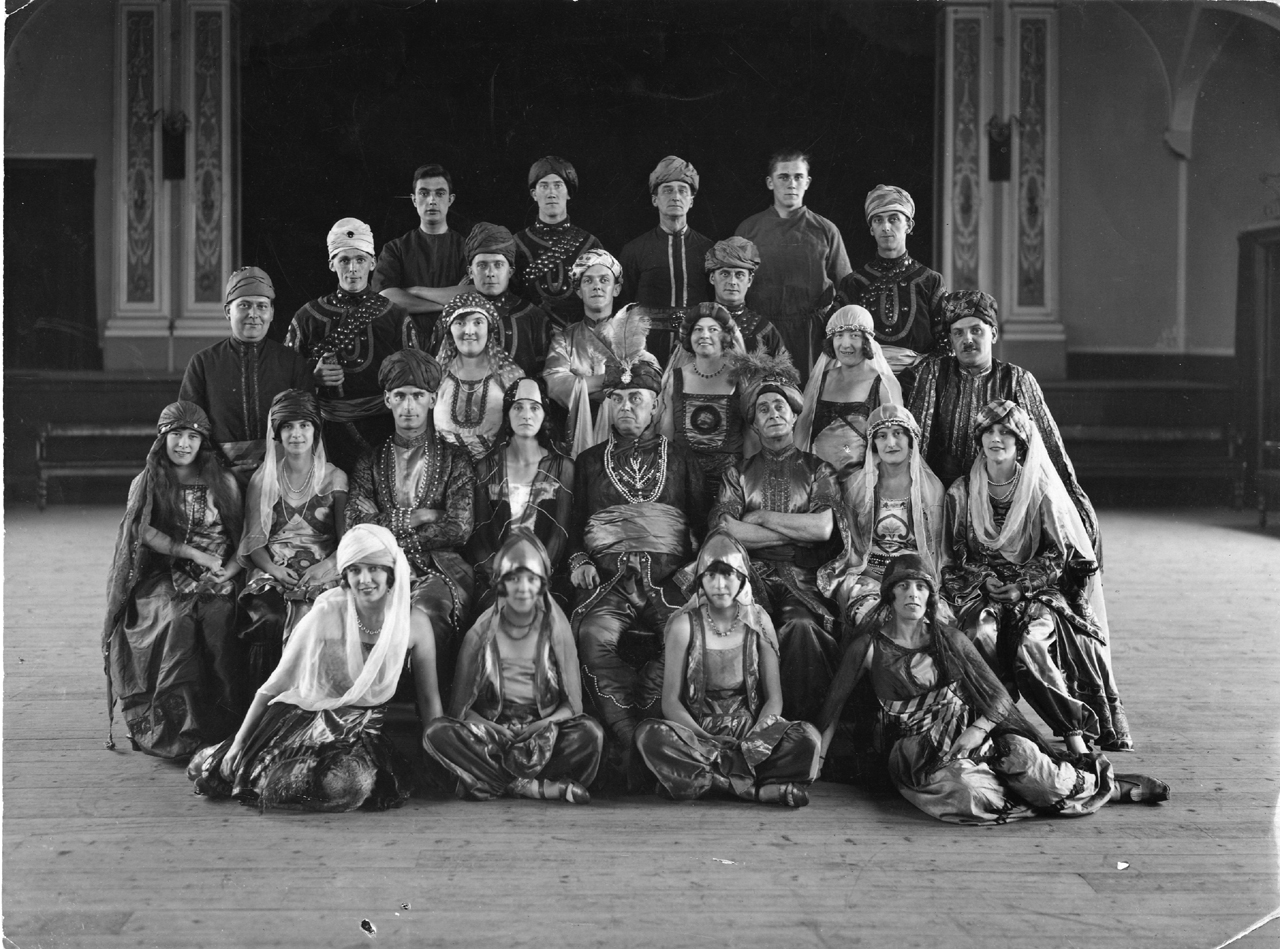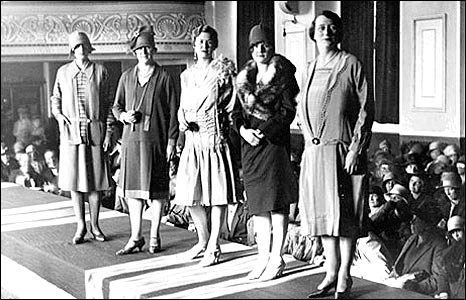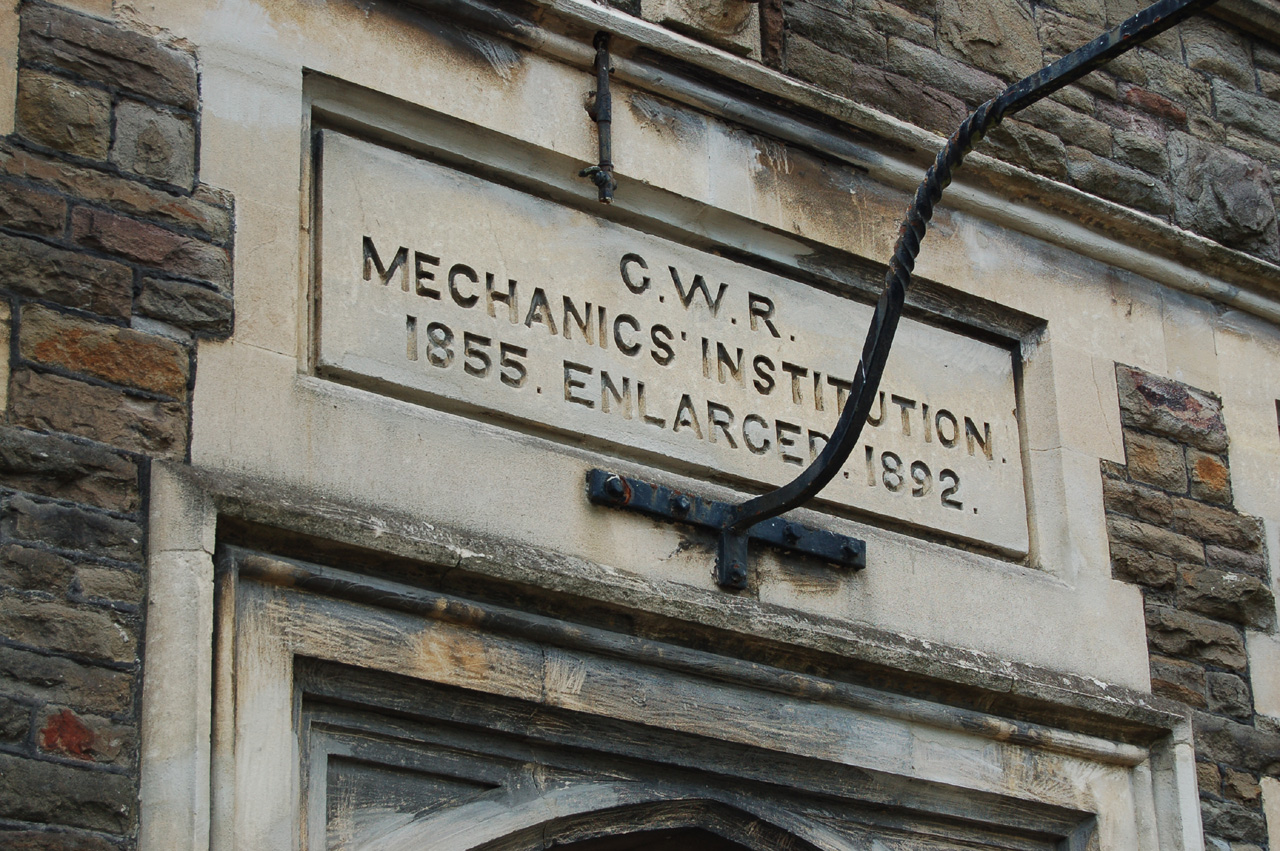Mechanics’ Extension
Click on the image below to view more and scroll down to read the story…
In Victorian times, people became very interested in information and learning. Demand for books, newspapers, pamphlets and magazines – all possible thanks to new technology – grew quickly.
The Mechanics’ Institution’s first library was soon full. By 1892 a huge extension was built where the market hall had stood for almost 40 years. This included an impressive, beautifully lit Reading Room displaying all the newspapers, which were now arriving in Swindon every day by train. Men would stand and read the daily news at tables, while at other tables they could study one of the many books available.
The extension included a games room and reading rooms for women and children. Although it may seem odd for us today for these to be separate, the Mechanics’ was progressive in enabling an inclusive society – providing these facilities at a time when most of the rest of the world were saying education for women was ‘not necessary’.
The people’s interest in reading grew and grew. Even a tragic fire in 1930, which destroyed much of the collection, wasn’t enough to stop the growing demand for books. In fact the library was so extensive and so accessible – even to non-railway workers – that Swindon didn’t set up a public library until 1943, almost 90 years after the government gave it permission.
The theatre thrived was considered the best in the West of England. Productions won prizes in regional and national events, with touring shows from other parts of the country regularly performing here. A baby elephant was once hoisted onto stage for a performance of the opera ‘Aida’!
The Mechanics’ was groundbreaking and is considered to be the country’s first arts and cultural centre. The Western Players, Swindon Amateur Light Operatic Society (SALOS) and the Swindon Music Festival, which continue today, were all formed here.
Mechanics’ Institutions exist all over the world. The Swindon Mechanics’ was the biggest, best and longest lived of the railway institutes in the UK – and is the last surviving.



